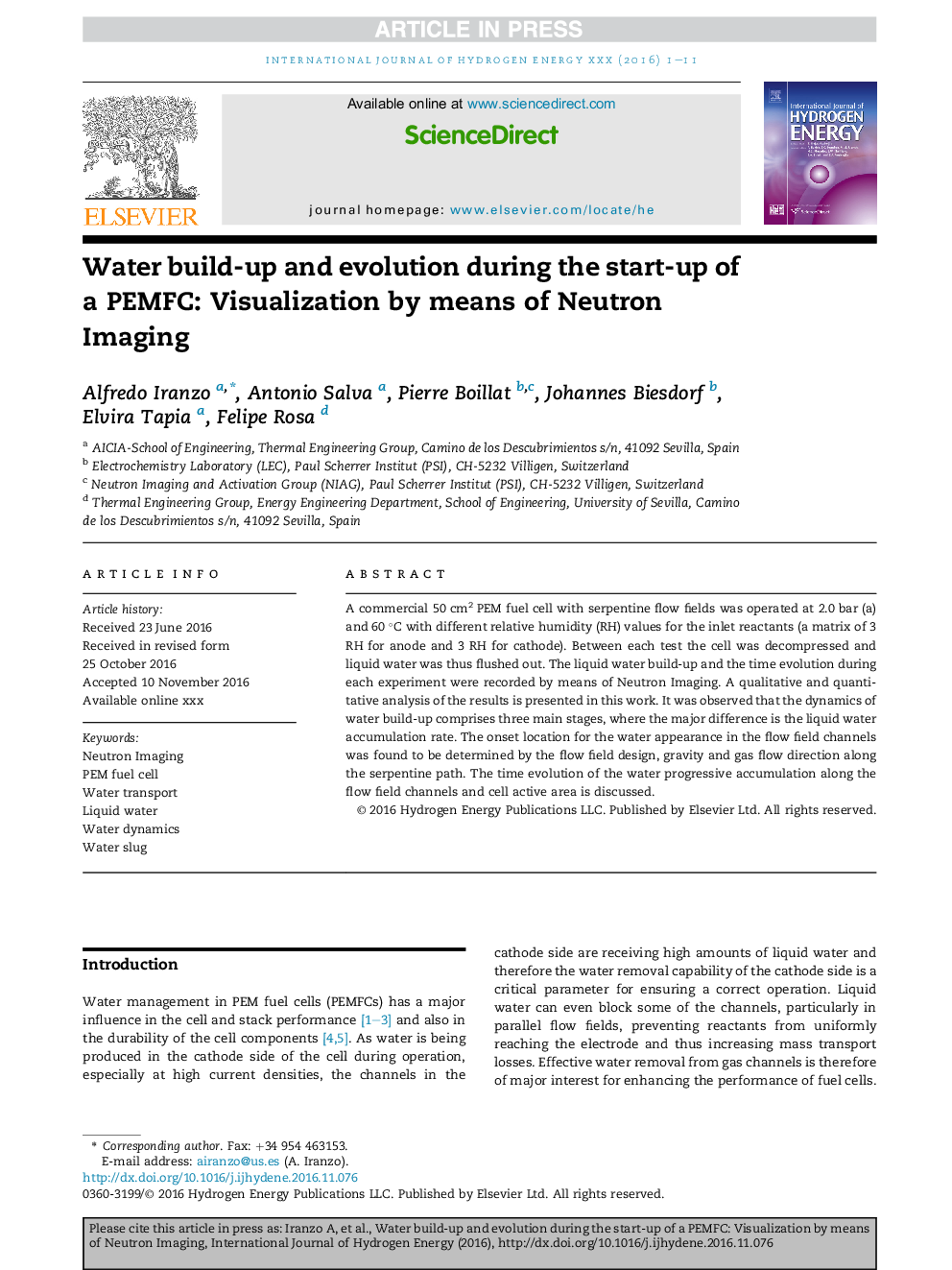| Article ID | Journal | Published Year | Pages | File Type |
|---|---|---|---|---|
| 5147329 | International Journal of Hydrogen Energy | 2017 | 11 Pages |
Abstract
A commercial 50 cm2 PEM fuel cell with serpentine flow fields was operated at 2.0 bar (a) and 60 °C with different relative humidity (RH) values for the inlet reactants (a matrix of 3 RH for anode and 3 RH for cathode). Between each test the cell was decompressed and liquid water was thus flushed out. The liquid water build-up and the time evolution during each experiment were recorded by means of Neutron Imaging. A qualitative and quantitative analysis of the results is presented in this work. It was observed that the dynamics of water build-up comprises three main stages, where the major difference is the liquid water accumulation rate. The onset location for the water appearance in the flow field channels was found to be determined by the flow field design, gravity and gas flow direction along the serpentine path. The time evolution of the water progressive accumulation along the flow field channels and cell active area is discussed.
Related Topics
Physical Sciences and Engineering
Chemistry
Electrochemistry
Authors
Alfredo Iranzo, Antonio Salva, Pierre Boillat, Johannes Biesdorf, Elvira Tapia, Felipe Rosa,
